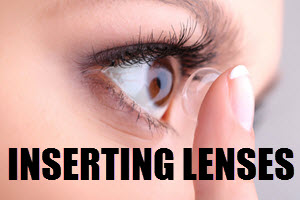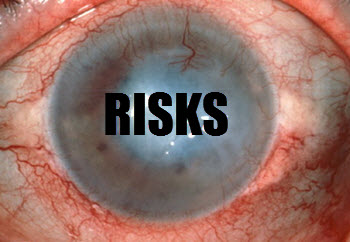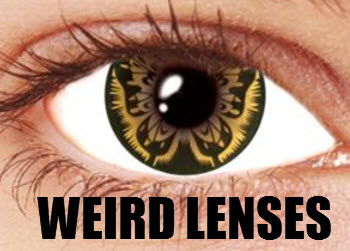Understanding Decorative Lenses
Decorative lenses, also referred to as cosmetic, colored, or costume lenses, are specifically designed to alter the appearance of your eyes. Although they can enhance or transform the color of your eyes, it is crucial to understand that these lenses do not correct vision. Their primary purpose is aesthetic, acting as a fashion accessory more than a medical necessity. Depending on the wearer’s preference, these lenses can offer a range of appearances, from subtle enhancements to more dramatic eye color changes.
Materials and Safety of Decorative Lenses
Materials: Like corrective contact lenses, decorative lenses are made from various materials intended to provide comfort and achieve the desired visual effect. Typically, these lenses are composed of hydrogel or silicone hydrogel materials. Both variants are designed to allow oxygen to pass through to the eye, an essential factor in ensuring the comfort and overall health of the eye while wearing these lenses.
Safety: Seeking advice from an eye care professional before using decorative lenses is a crucial step. These lenses may not correct vision, but they are still medical devices subject to proper fitting to prevent potential harm to your eyes. Purchasing lenses over the counter without a valid prescription can lead to improper use, significantly increasing the risk of eye infections and other complications. According to the FDA, all types of contact lenses, decorative included, are recognized as medical devices that require a prescription for safe use. This regulatory measure helps ensure users select lenses that fit properly and are used safely.
Diverse Options for Eye Color Enhancement
The variety of decorative lenses available on the market caters to the diverse preferences of individuals seeking to alter their eye appearance. Depending on the style, these lenses can either subtly enhance your natural eye color, making it appear brighter or more intense, or reform it completely, offering a dramatic transformation.
Enhancement Tints: Enhancement tints are particularly designed to enrich your natural eye color. These lenses work by intensifying the shade of your existing eye color and are suitable for those seeking a subtle change. Typically, enhancement tints are translucent, which allows them to blend seamlessly with your current eye color, offering a more natural appearance while enhancing the depth and vibrancy of your eyes.
Opaque Tints: For individuals interested in entirely changing their eye color, opaque tints present an excellent option. Unlike enhancement tints, opaque lenses have a solid color structure capable of covering any natural eye color completely. This allows wearers to experiment with entirely different eye colors, achieving drastic, noticeable changes that suit their personal or stylistic needs.
Choosing the Right Decorative Lenses
Selecting the most suitable decorative lenses requires careful consideration of several factors, including your natural eye color, the occasions for which you plan to wear the lenses, and your stylistic preferences. Here are some factors to consider:
- Natural Look: To achieve a natural look, choose lenses in colors that complement or slightly enhance your own eye color. Popular choices for a subtle enhancement include shades of blues, greens, or browns that blend with natural tones.
- Dramatic Change: Should you prefer a more striking appearance, consider opting for lenses in colors that starkly contrast with your natural eye color. This approach is ideal for special occasions such as themed events or costume parties, where a bold eye color can contribute to the overall effect of a character or theme.
Proper Care and Maintenance
Similar to regular contact lenses, decorative lenses necessitate careful care and regular maintenance to support eye health. Adopting a proper hygiene routine and understanding the care procedures for these lenses is imperative for a safe wearing experience. Here are guidelines to follow:
- Always ensure your hands are washed and dried thoroughly before handling your lenses.
- Clean and disinfect your lenses as per the instructions provided by your eye care professional or the lens manufacturer. Proper cleaning helps to remove any debris or bacteria that can accumulate on the lenses, reducing the risk of eye infections.
- Nurture exclusivity: Never share your lenses with others, as doing so can have hygienic risks and increase the potential for infections.
- Adhere to the recommended wearing schedule, and avoid surpassing the advised duration for which you should wear the lenses. Doing so can minimize the risk of eye irritations and other issues.
Emphasizing proper hygiene and adhering to care routines significantly lessens the likelihood of developing eye problems while simultaneously improving the overall experience of wearing decorative lenses. Always remember to seek professional advice to establish the best selections and practices tailored to your specific visual and aesthetic needs.



 Cosmetic contact lenses
Cosmetic contact lenses